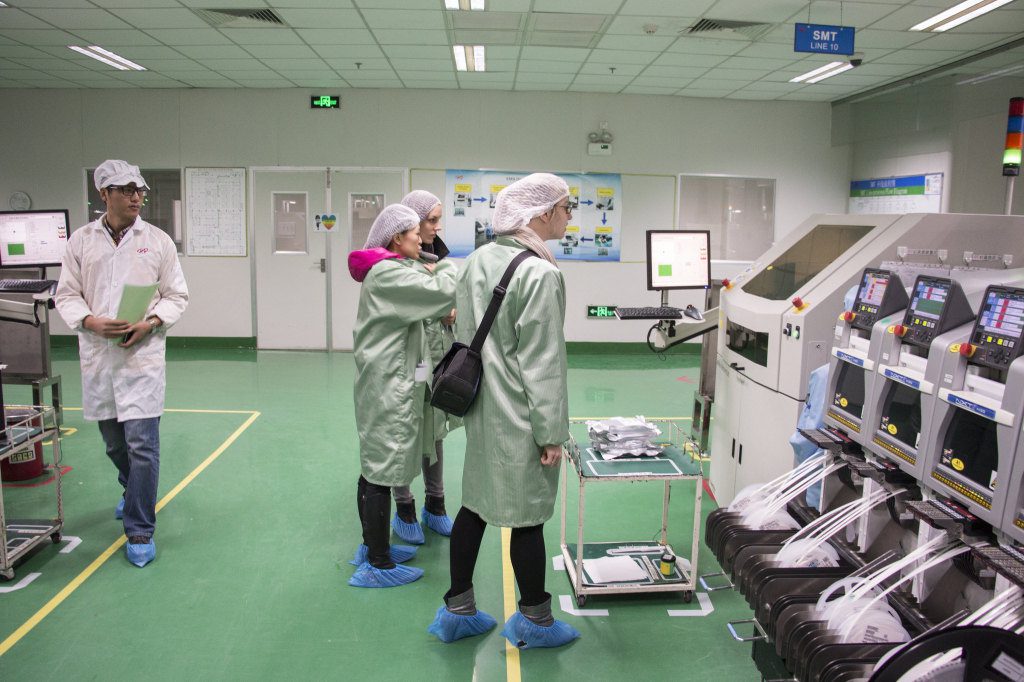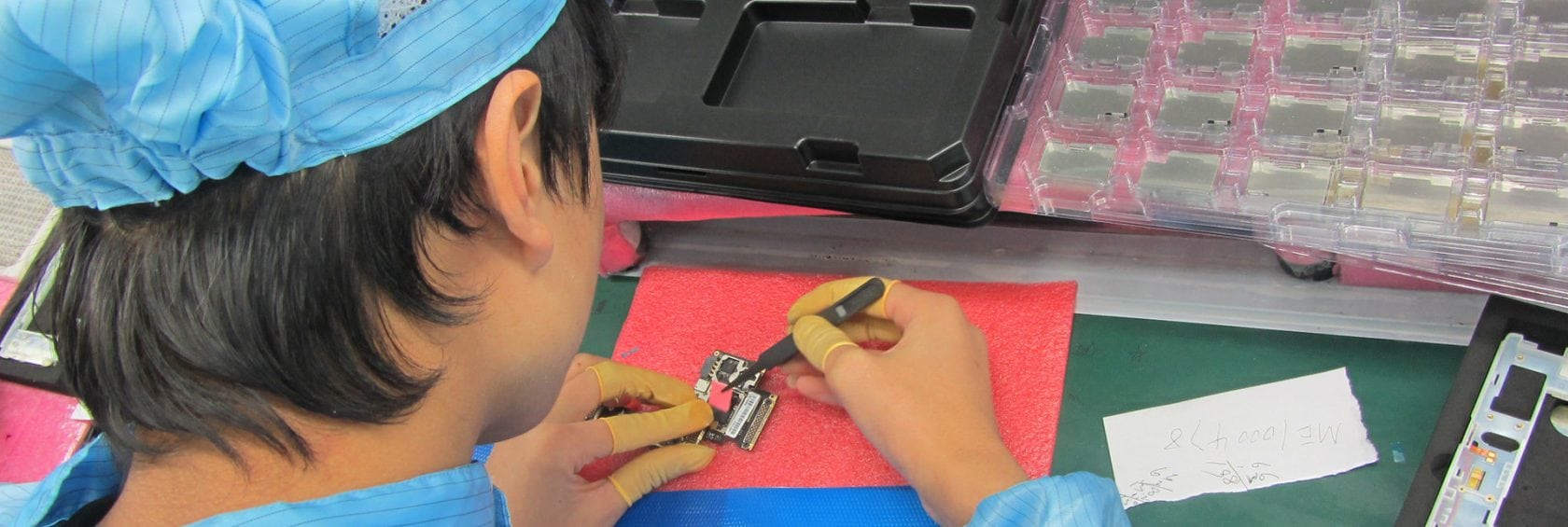Reflecting on our efforts to set up a Worker Welfare Fund at Hi-P
Three years ago, we introduced you to a crucial partner for making the Fairphone 2: Hi-P International Limited. In addition to having the technical capabilities to assemble our phone, we partnered with Hi-P based on a shared commitment to improving working conditions. Although improvements have been made over the years following Fairphone’s social assessments, we were unable to develop an impactful Worker Welfare Fund program. While we very much regret we were not able to achieve our goal on this topic, the experience has provided valuable input for our future approach to improving worker welfare.
Collaboratively improving working conditions
As a social enterprise, one of our goals is to improve working conditions and increase worker satisfaction at the factories where our phones and components are made. In order to establish a lasting impact, we want to go beyond the traditional compliance model of ‘checking boxes’. Instead, we make an effort to work closely with a handful of selected suppliers to assess their current situation and make a collaborative plan for improvement.
We have different levels of involvement, ranging from chemicals management to worker engagement programs. We believe that an effective dialogue between workers and management, building on a system that genuinely represents all workers in the factory, is a healthy and sustainable long-term solution for making a positive impact on working conditions, which should complement just regular auditing. When we began this phase of work, we saw the Worker Welfare Fund as an experimental yet promising approach to achieve this long-term positive impact together with our suppliers. The goal of the fund was to promote dialogue between employees and management, which includes training employees to voice their suggestions and concerns as well as contribute to implementing improvements.
Setting-up the Worker Welfare Fund
When we began searching for a final assembly manufacturer for the Fairphone 2, we knew that our requirements were not an easy sell. We were making a completely new type of modular phone, had fairly low production volumes and also required our new partner to be receptive to invest in improving working conditions.
Hi-P and Fairphone entered into an initial agreement in 2015. In March of that year, we agreed upon a timeline for implementing the Worker Welfare Fund, but progress kept getting derailed, for different reasons.

Fairphone team members at Hi-P facilities.
The biggest challenge was finding a way to integrate the Worker Welfare Fund with the worker representation system that Hi-P already had in place. Unionization is centrally governed in China: the All-China Federation of Trade Unions (ACFTU) is the only legal union. ACFTU has the mandate to determine how local unions are organized and to approve or veto local election results (ILO 2011, p.15; ITUC 2012). When we were developing the Worker Welfare Fund structure and processes, we were challenged to ensure it would be built up as not just another parallel representative system next to the system already in place, and therefore to align them with the local union governance and organizational guidelines. This resulted in differences in views on topics such as how to organize the voting process and the oversight of the Fund, which we unfortunately could not overcome.
We also faced continuous legal and bureaucratic obstacles. Part of the problem was the structure of the fund itself. For example, in the past we had found it costly and overly complicated to set up a Chinese workers fund and related banking requirements in the Netherlands. So this time, the plan was to set up the fund in China. However, we learned that as a foreign organization, Fairphone can’t co-own or contribute to a fund registered in China. In the end, a longer list of these kind of obstacles became a barrier for progressing with setting up the fund.
Finally, unstable Fairphone 2 production made matters more complicated. We had some issues with component shortages, which caused ongoing gaps in production. The unstable production impacts the relationship with Hi-P, caused irregularity in the size and sustainability of the workforce and distracted both parties from making progress on the Worker Welfare Fund.
The challenges described above translated into more than two years of discussions and negotiations regarding the fund. Despite a genuine willingness to explore the topic of worker welfare together, in the end we didn’t find sufficient common ground required for what is needed in our view to set up a successful Worker Welfare Fund.
Moving forward
While we highly regret that we couldn’t implement our fund with Hi-P, we also learned some valuable lessons, which shape our ongoing approach to improving worker welfare.
One of the learnings we took away is that we can have high ambitions, but in order to achieve them we need to have a common ground and aligned views on how to get there together with our supplier. Before entering or even at the start of a business relationship, it is not always clear to what level this common ground exists. This cannot just be identified or settled in an audit or a contract. The level of partnership we seek requires a deeper level of engagement, and is also largely dependent on the willingness, drive and possibilities of our counterpart. Success is not guaranteed, but nevertheless still very worthwhile aiming for. Two factors that will make the chance for success higher:
1) Identify and work on the topic of worker welfare with suppliers [strategic, but can also be second or third-tier] who show genuine interest and flexibility to experiment on the level of worker voice/representation. An example of this is at Broadway, where the slim cases for the Fairphone 2 are made.
2) Make the link with the benefits for overall business as tangible as possible, also to generate more genuine interest as described under number 1). We use for example the data analyses generated by the IDH program. Based on data collected amongst 50 electronics manufacturers in China that participated in a worker representation program between 2010-2015, where a correlation is shown between increased trust of employees towards management through improved representation & dialogue, which in itself correlates with higher worker retention and higher worker satisfaction.This is also why we work on further embedding our worker welfare programs in a broader business case for driving improvements, and connect business with social key performance indicators in our manufacturing agreements.
We will continue to work with our suppliers on strengthening employee-management dialogue and worker representation, and follow up on our commitment to dedicate a significant part of your contribution to the phone to worker welfare and other social projects. And yes, we will probably be faced with yet a few other detours along the way. But we believe that is part of the challenge, and we are up for it!
References
ILO (2011) All China Federation of Trade Unions: Structure, Functions and the Challenge of Collective Bargaining. Rudolf Traub-Merz, International Labor Office, Global Labour University, p.12 – 15. http://www.global-labour-university.org/fileadmin/GLU_Working_Papers/GLU_WP_No.13.pdf
International Trade Union Confederation (ITUC) (2012) Report for the WTO General Council Review of the Trade Policies of the People’s Republic of China. https://www.ituc-csi.org/report-for-the-wto-general-council,11476



